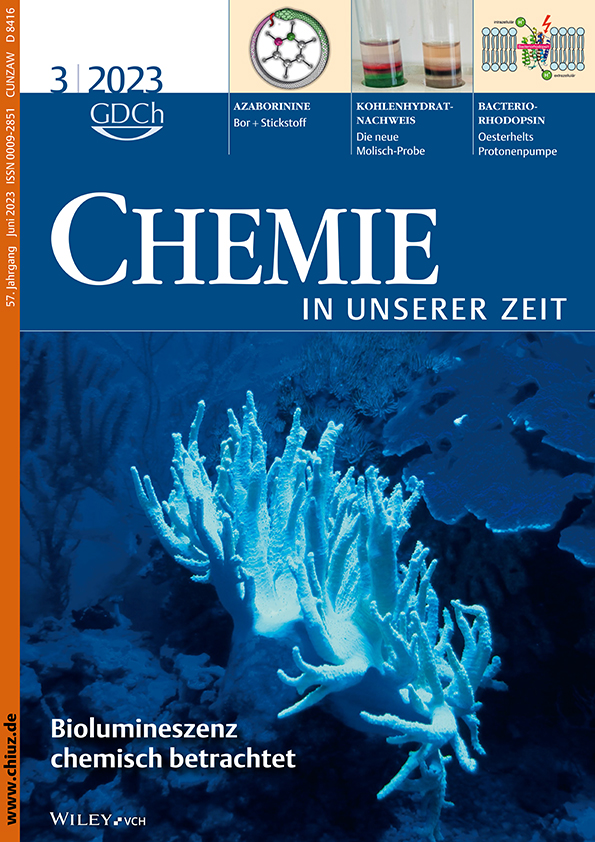Ein sicherer Kohlenhydratnachweis
Die neue Molischprobe für den Unterricht
Zusammenfassung
deDie Molisch-Probe ist ein schön anzusehender Kohlenhydratnachweis, welcher die Besonderheit aufweist, dass Pentosen von Hexosen sowie von Desoxyzuckern farblich unterschieden werden können. Der Einsatz von α-Naphthol als Feststoff ist dabei als bedenklich anzusehen. Das Gefahrenpotenzial des Experiments kann durch einen verringerten Chemikalieneinsatz reduziert werden; außerdem kann entweder festes α-Naphthol durch eine ethanolische Fertiglösung substituiert werden (Ersatzverfahren) oder alternativ der Naturstoff Carvacrol als Ersatzstoff verwendet werden. Unter Beachtung dieser Modifikationen ist die ‚neue‘ Molisch-Reaktion (Carvacrol-Reaktion) ein aussagekräftiger Schülerversuch, welcher mit einfachen Materialien umgesetzt werden kann.
Summary
enMolisch's test is a test for carbohydrates which has the feature to differentiate between pentoses (arabinose, ribose, xylose), hexoses (e.g. glucose, galactose, fructose) and rhamnose, a deoxy sugar, via the colour shown. The use of α-Naphthol as a solid has to be regarded as questionable. The risk potential of the experiment can be lowered via a reduced amount of applied chemicals thus leading to a thoroughly mixed solution instead of the normally formed ring in the test tube indicating a positive reaction. To further lower the risk potential of the reaction solid α-Naphthol can be replaced by its ethanolic solution or the use of the natural compound Carvacrol. The implementation of these modifications yields a “new” colorful and meaningful Molisch test which can be used as an experiment for students with simple materials.




